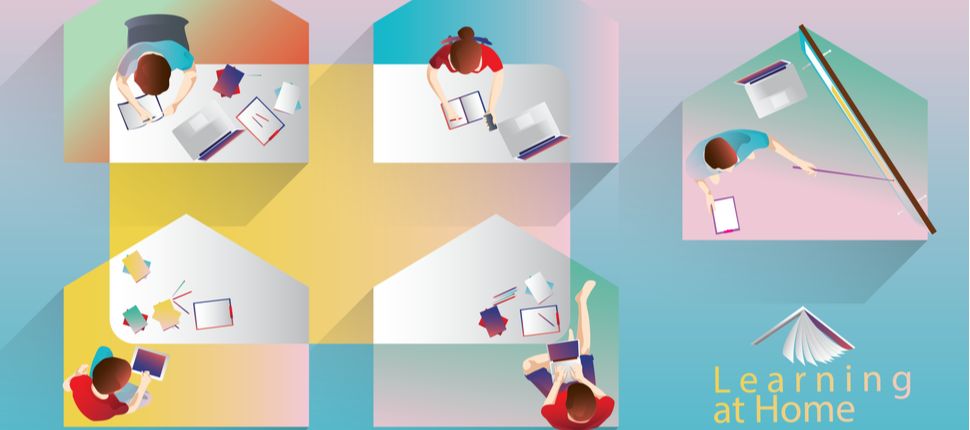Learning from Home – Security Practices to Keep Your System and Children Secure

The pandemic has had an impact on the way we work as well as the way our children learn. The 'work from home' model became a necessity, and so did 'learn from home.' While children have now begun making their way back to classrooms, there is still a substantial percentage who are studying from home. They are on their computers trying to get their heads around virtual learning.
They are using a computer for something other then entertainment. The computer has transformed an entertainment console into a learning console, or rather, returned the computer to its original purpose. The 'work from home' and ‘learn from home’ culture is putting the spotlight on an important aspect that might have been flying under the radar: security.
How do you ensure that your children are using their personal computer securely and their actions aren’t unknowingly compromising the system? It is important that certain security practices are followed that not only keep your computer safe, but also protect your children from other web-borne threats.
Implementing these security best practices shouldn’t be a temporary thing. You need to think of these as a long-term strategy, and only then will they deliver the security dividends you are looking for.
Create user accounts on shared devices
Typically, your family laptop, desktop, or tablet will be shared between siblings to access their schoolwork and participate in online classes. The best practice here is giving each child their own user account.
This will allow you to set up parental controls without impacting your own access. An associated benefit of creating user accounts is that children fall into the habit of using passwords to access their accounts, and this is a good security habit. For tips, take a look at our step-by-step guide to set up a Mac for young children.
Control internet access
To support home schooling, teachers will provide links to online learning resource. These might be hosted on sites such as YouTube, Vimeo, or other sites. Many a times, children also have to do their own bit of research on the web to learn more about a subject or complete a set of tasks assigned by their teachers. Internet access is an essential requirement here, but you must ensure your child is protected from inappropriate websites/adult content and any other website that means them harm and which shouldn’t be accessed.
There are also websites that host malware, and this malware is downloaded onto your computer automatically when you visit the site or when your child clicks on a link. So, make sure you have controls in place to restrict your children from visiting inappropriate websites.
Password hygiene
Students are usually given a user name and password to access online learning resources. This might actually be the first time they are called upon to remember and manage passwords. Typically, a school’s online resources can be accessed by passwords set by the school, but all other passwords that can be updated must be updated.
Make sure your children are aware about the importance of creating passwords that are difficult to crack. Ask them to come up with such passwords to give them a sense of ownership. Introduce them to passphrases, and start off by creating phrases around their areas of interest and work with them to make them more complex. What’s more, make sure that they subscribe to the password rule of thumb – never share it with anyone (apart from you, of course).
Blunt the weapon of choice – phishing emails
There are numerous instances of adults getting sucked into a phishing attack, and it is by far the most popular attack methodology used by cybercriminals. But children can be the target of a phishing attack as well. If your children are using a personal email account, it is imperative that you educate them about phishing attacks and the fact that they need to be very careful when they open and take any action with an email message. They must verify that it is from a trusted source and think twice before they click on any link in an email.
As a parent, you must also be aware of the official email accounts of teachers and school officials. This way you can also keep track of the emails reaching your child’s inbox.
Secure devices
A prerequisite for a safe and secure online experience is device security. You not only must ensure your device is patched and up to date, but also install an advanced antivirus solution. Sophos Home (free and paid versions are available) delivers business-grade cybersecurity for your personal Windows computers, Macs, and Android phones.
Features include malware scanning and cleaning, AI threat detection, ransomware security, security management, privacy protection, web protection, parental web filtering, and lot more. The idea behind deploying a comprehensive security solution is to ensure your security keeps in step with the evolving threat landscape. Legacy solutions cannot keep up with all the sophisticated threats that cybercriminals will throw at you.
Conclusion
It’s all about being proactive. Recognize that there are threats out there on the web that can put your child and also your computer in danger. Then begin the process of taking proactive steps to address these issues.
It’s also a matter of making your children aware of all these threats and cybersecurity best practices so that you can trust them to take the right decisions. You cannot keep a constant watch on their actions while they are using the computer. This is why cybersecurity awareness and a cutting edge cybersecurity software are the foundation of a safe and secure home studying experience.